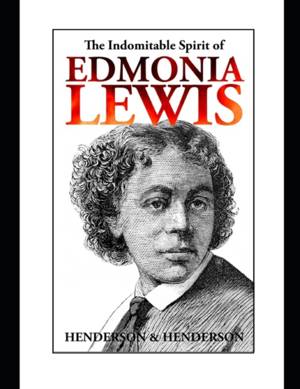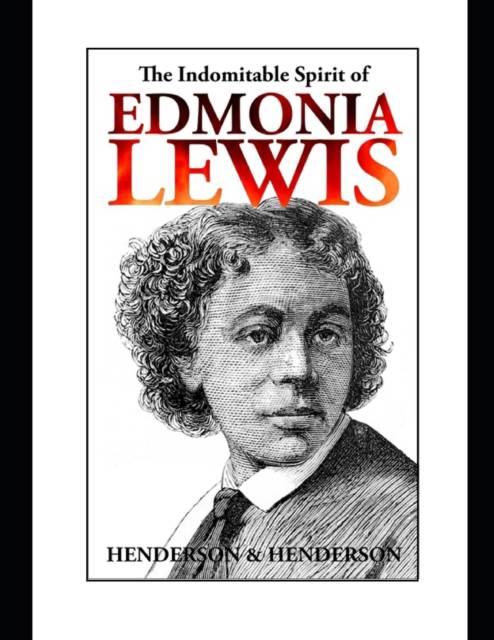
- Afhalen na 1 uur in een winkel met voorraad
- Gratis thuislevering in België vanaf € 30
- Ruim aanbod met 7 miljoen producten
- Afhalen na 1 uur in een winkel met voorraad
- Gratis thuislevering in België vanaf € 30
- Ruim aanbod met 7 miljoen producten
Zoeken
The Indomitable Spirit of Edmonia Lewis.
A Narrative Biography
Albert Henderson, Harry Henderson
Paperback | Engels
€ 21,45
+ 42 punten
Omschrijving
Winner of the eLit GOLD award: "Illuminating Digital Publishing Excellence."
Edmonia Lewis was the first famous "colored sculptor" and the first to idealize her African and American Indian heritages in stone. She flourished from 1864 through 1878, and, as an artist, was a rare instrument for social change in the aftermath of the Civil War. She pressed her case for equality from her studio in Rome, Italy, and with annual tours of the United States.
Our new narrative of Lewis's life and art updates many "established facts" - well beyond erroneous birth and death dates - with more than 100,000 words, 50 illustrations, 800 references, bibliography, index, and a reference list of more than 100 works with notes on museum holdings. It is based on private letters, public documents, essays, hundreds of news items, reviews of her work, museum collections, and more than two dozen published interviews. It reveals how a world biased against her color, class, gender and religion received her. Of special interest to African-American and American-Indian studies, as well as art, women's, and American history, the narrative opens an abundance of previously unrecognized sources, reinterprets important relationships, names missing works, and corrects the identification of an important portrait. Students of the nineteenth century will find it a cool counterpoint to the bitter rage of Civil War and Reconstruction.
Readers familiar with her legendary icons of race may be surprised by her many portraits and her untold moves to Paris and London. They will also find answers to long-standing questions: Where, when, and how did she die? Why did her encounter with a bronze Ben Franklin leave her reeling? Why did she idealize a woman with African features only once in her career? Why did she never cite the now-famous Forever Free after her first interviews in Rome? Why did she have to stalk Henry Wadsworth Longfellow through the streets to make his portrait? Where was her studio? How often did she tour America? How did she enter her work in the 1876 Centennial expo, which had barred colored people absolutely? What were her relationships with fans, mentors, and fellow sculptors? Who were her rivals, her best friends, and her worst enemies? Fresh evidence, never before collected and collated, argues a novel motive for her erotic masterwork, the Death of Cleopatra, which sits apart in her oeuvre like a hussy in a small town church. Newly realized sources also change our view of her childhood and provide ample support to refute distortions of her personal character, sexuality, and appearance.
Harry Henderson was co-author with Romare Bearden of the "landmark" History of African-American Artists from 1792 (Pantheon, 1993) and 6 Black Masters of American Art (Doubleday, 1972). Albert Henderson has contributed to a number of learned journals and books.
Edmonia Lewis was the first famous "colored sculptor" and the first to idealize her African and American Indian heritages in stone. She flourished from 1864 through 1878, and, as an artist, was a rare instrument for social change in the aftermath of the Civil War. She pressed her case for equality from her studio in Rome, Italy, and with annual tours of the United States.
Our new narrative of Lewis's life and art updates many "established facts" - well beyond erroneous birth and death dates - with more than 100,000 words, 50 illustrations, 800 references, bibliography, index, and a reference list of more than 100 works with notes on museum holdings. It is based on private letters, public documents, essays, hundreds of news items, reviews of her work, museum collections, and more than two dozen published interviews. It reveals how a world biased against her color, class, gender and religion received her. Of special interest to African-American and American-Indian studies, as well as art, women's, and American history, the narrative opens an abundance of previously unrecognized sources, reinterprets important relationships, names missing works, and corrects the identification of an important portrait. Students of the nineteenth century will find it a cool counterpoint to the bitter rage of Civil War and Reconstruction.
Readers familiar with her legendary icons of race may be surprised by her many portraits and her untold moves to Paris and London. They will also find answers to long-standing questions: Where, when, and how did she die? Why did her encounter with a bronze Ben Franklin leave her reeling? Why did she idealize a woman with African features only once in her career? Why did she never cite the now-famous Forever Free after her first interviews in Rome? Why did she have to stalk Henry Wadsworth Longfellow through the streets to make his portrait? Where was her studio? How often did she tour America? How did she enter her work in the 1876 Centennial expo, which had barred colored people absolutely? What were her relationships with fans, mentors, and fellow sculptors? Who were her rivals, her best friends, and her worst enemies? Fresh evidence, never before collected and collated, argues a novel motive for her erotic masterwork, the Death of Cleopatra, which sits apart in her oeuvre like a hussy in a small town church. Newly realized sources also change our view of her childhood and provide ample support to refute distortions of her personal character, sexuality, and appearance.
Harry Henderson was co-author with Romare Bearden of the "landmark" History of African-American Artists from 1792 (Pantheon, 1993) and 6 Black Masters of American Art (Doubleday, 1972). Albert Henderson has contributed to a number of learned journals and books.
Specificaties
Betrokkenen
- Auteur(s):
- Uitgeverij:
Inhoud
- Aantal bladzijden:
- 486
- Taal:
- Engels
Eigenschappen
- Productcode (EAN):
- 9798514106813
- Verschijningsdatum:
- 17/11/2021
- Uitvoering:
- Paperback
- Formaat:
- Trade paperback (VS)
- Afmetingen:
- 216 mm x 279 mm
- Gewicht:
- 1115 g

Alleen bij Standaard Boekhandel
+ 42 punten op je klantenkaart van Standaard Boekhandel
Beoordelingen
We publiceren alleen reviews die voldoen aan de voorwaarden voor reviews. Bekijk onze voorwaarden voor reviews.











